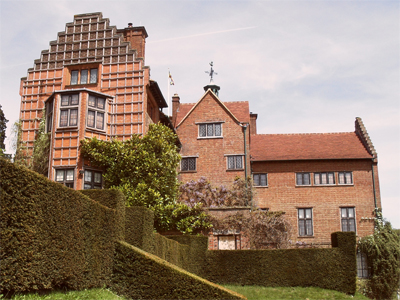Winston Churchill's Country Home
Chartwell was the much-loved family home and gardens of Sir Winston Churchill between 1922 and his death in 1965. It is situated in the beautiful Kent countryside just a short distance from the pleasant town of Westerham and is presently looked after by the National Trust. Churchill loved this house and was particularly captivated by the gorgeous views over the delightful Weald of Kent, and the peace and tranquility the estate offered. These were Churchill's main reasons for buying Chartwell. The house takes it's name from a ground well on the north side of the house, as 'Chart' is an old English word for rough or uneven ground.
Chartwell was originally a farm house and can trace it's history back to the 16th-century. Since then, Chartwell has seen continual alterations and modifications, none more so than in the 19th-century when the property became a rather unattractive example of gloomy Victorian architecture. Churchill employed the architect Philip Tilden in 1922 to make much needed changes and improvements which is what we see today. Today, it still retains the homely atmosphere that Churchill wanted.
The rooms inside Chartwell remain largely as they were when Churchill lived there and still display his many pictures, paintings, drawings, books and personal belongings. The original Visitors Book is still there and contains the signatures of famous names such as Montgomery and Lloyd George. The dining room is the heart of Chartwell. It's large arched windows give magnificent views over the gardens and the beautiful Kent countryside beyond. Another focal point of Chartwell is Churchill's study upstairs near to his bedroom. This room is still just as he left it.
The Chartwell gardens and estate gave Sir Winston Churchill and his wife Clementine the peace and tranquility they loved. It was a place of relaxation and interest to Churchill, and he spent much time in the hillside gardens and grounds building walls and making many structural modifications. He made many good changes and transformed the grounds with new lakes, built a charming water garden and created Lady Churchill's special rose garden. He also built a playhouse for the youngest Churchill daughter. It was these beautiful gardens that provided Churchill's inspiration for many of his paintings and drawings, some of which are now on display in Chartwell's garden studio.
Chartwell and the gardens have been well preserved by the National Trust and are now open to visitors. The Chartwell estate looks just like it did when Sir Winston Churchill and Lady Chrchill lived there. Chartwell has a visitor centre and restaurant serving local food and snacks, and a charming shop selling Churchill books and souvenirs.

